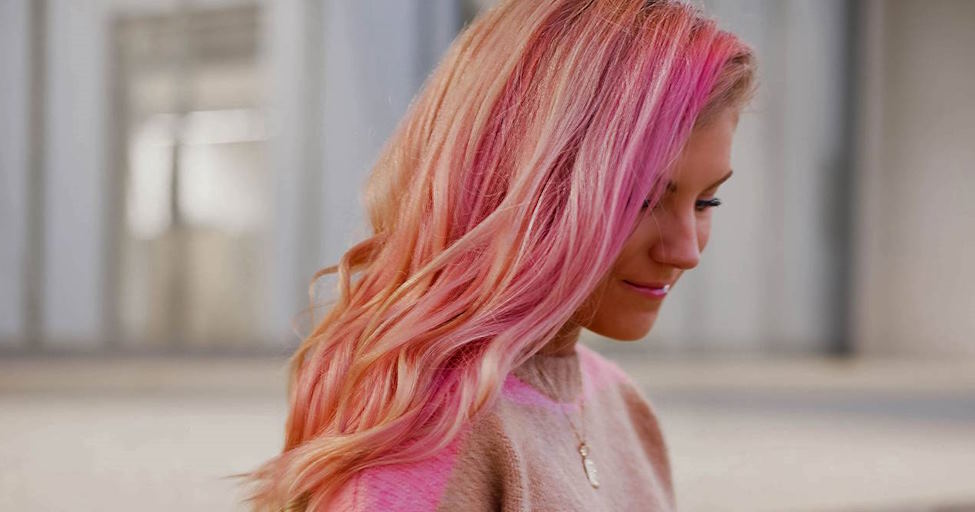The allure of rose gold hair has taken the world of beauty by storm, becoming a coveted trend that seamlessly blends sophistication with a touch of whimsy. For those looking to make a striking transition from classic blonde to the mesmerizing hues of rose gold, this step-by-step guide is your compass through the captivating journey. Rose gold isn’t just a color; it’s a statement, an expression of individuality that transforms your locks into a radiant masterpiece.
Preparing Your Hair for the Transition
A successful transition from blonde to rose gold begins with optimal hair health. Deep conditioning treatments not only nourish the hair but also create a favorable canvas for the color to adhere to, ensuring a more even and vibrant result. Consider using a clarifying shampoo to remove any product buildup, allowing the rose gold color to penetrate the hair shaft effectively.
Trimming your hair before the transition serves a dual purpose: it removes damaged ends, promoting overall hair health, and sets the stage for a more polished and refined look post-coloring. By investing time in preparing your hair, you pave the way for a seamless and stunning transformation.
Choosing the Right Rose Gold Shade
The key to a successful rose gold hair color transformation lies in picking the perfect shade. This decision involves more than personal preference; it requires consideration of your skin undertones. A skilled colorist can provide valuable insights into which rose gold variation will complement your complexion, ensuring a harmonious and flattering result.
Explore the spectrum of rose gold shades, from subtle blush tones to deeper, more intense hues. Factors such as the season and your personal style preferences can influence this decision. Remember, the beauty of rose gold lies in its versatility, allowing you to express your individuality through a myriad of captivating shades.

Gathering Necessary Supplies
With your desired rose gold shade selected, it’s time to gather the necessary supplies for the coloring process. These include the hair dye and developer in the chosen shade, an applicator brush and bowl for precise application, sectioning clips to divide your hair evenly, and gloves to protect your hands. Wearing a protective cape or old clothing is also advisable to prevent staining.
Step-by-Step Guide to Transitioning
Embarking on the actual transition requires a methodical approach to achieve the desired rose gold result. Start with a strand test to ensure the chosen color reacts well with your hair and achieves the intended shade. This step is crucial for avoiding any unpleasant surprises and ensuring satisfaction with the final result.
Section your hair for even application, using clips to separate manageable portions. Mix the rose gold hair dye with the developer according to the product instructions. Applying the color evenly is key to achieving a seamless transition. Consider starting from the roots and working your way down for consistent coverage.
The processing time will depend on the specific hair dye used and the desired intensity of the rose gold color. Be patient and allow the color to develop fully. Once the processing time is complete, rinse your hair thoroughly and follow up with a nourishing conditioner to restore moisture and enhance the vibrancy of the rose gold hue.

Maintaining Rose Gold Hair
Achieving the perfect rose gold shade is just the beginning; maintaining its vibrancy requires ongoing care. Invest in quality hair care products designed for colored hair, including sulfate-free shampoos and conditioners. These products help preserve the integrity of the color and prevent premature fading.
Regular touch-ups are essential to keep your rose gold locks looking fresh and vibrant. Consult with your colorist to establish a maintenance schedule based on your hair’s growth rate and the specific characteristics of the rose gold shade you’ve chosen. Periodic salon visits can also provide professional care to keep your hair in optimal condition.
Troubleshooting Common Issues
Even with careful planning, unexpected issues may arise during the transition process. Uneven color distribution is a common challenge that can be addressed by applying the color more evenly in subsequent sessions. If the final color differs from your expectations, consult with a professional colorist for corrective measures. In challenging situations, seeking expert advice is key to achieving the desired outcome.
